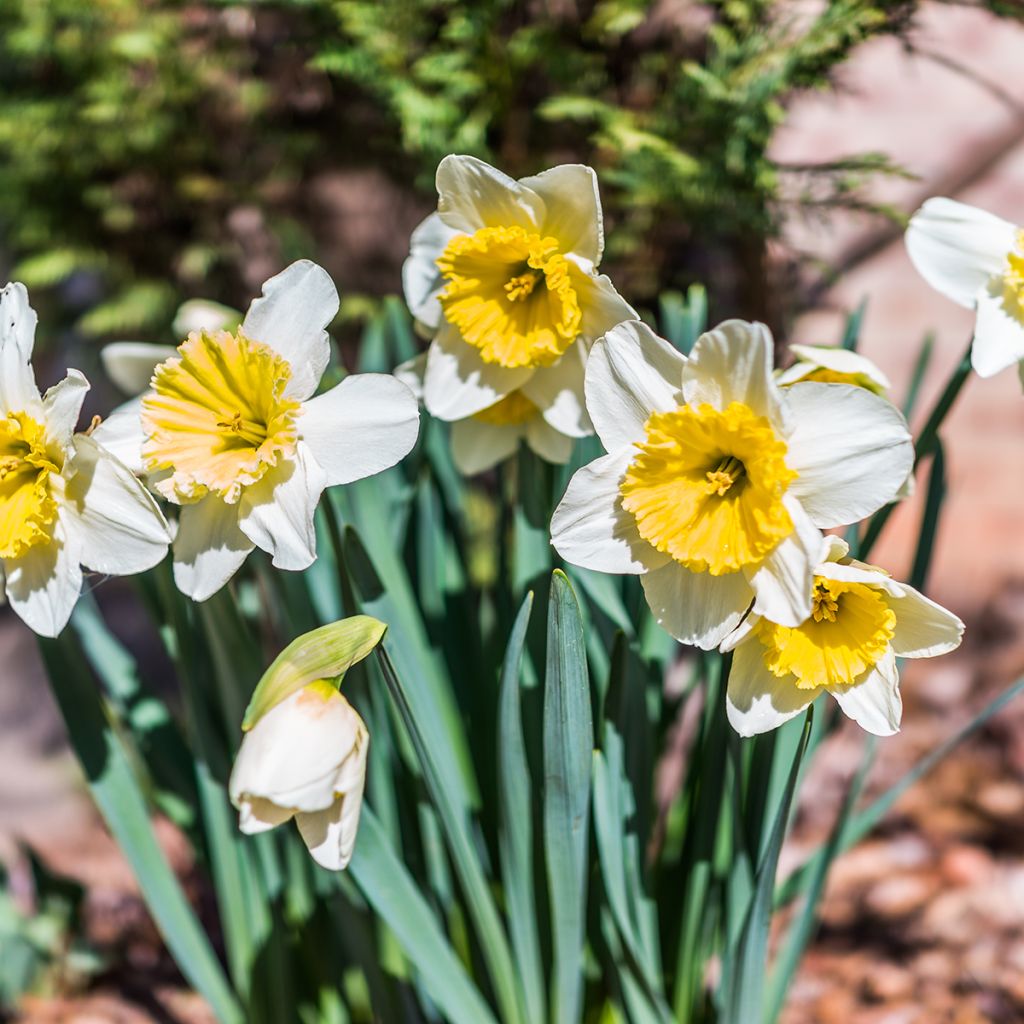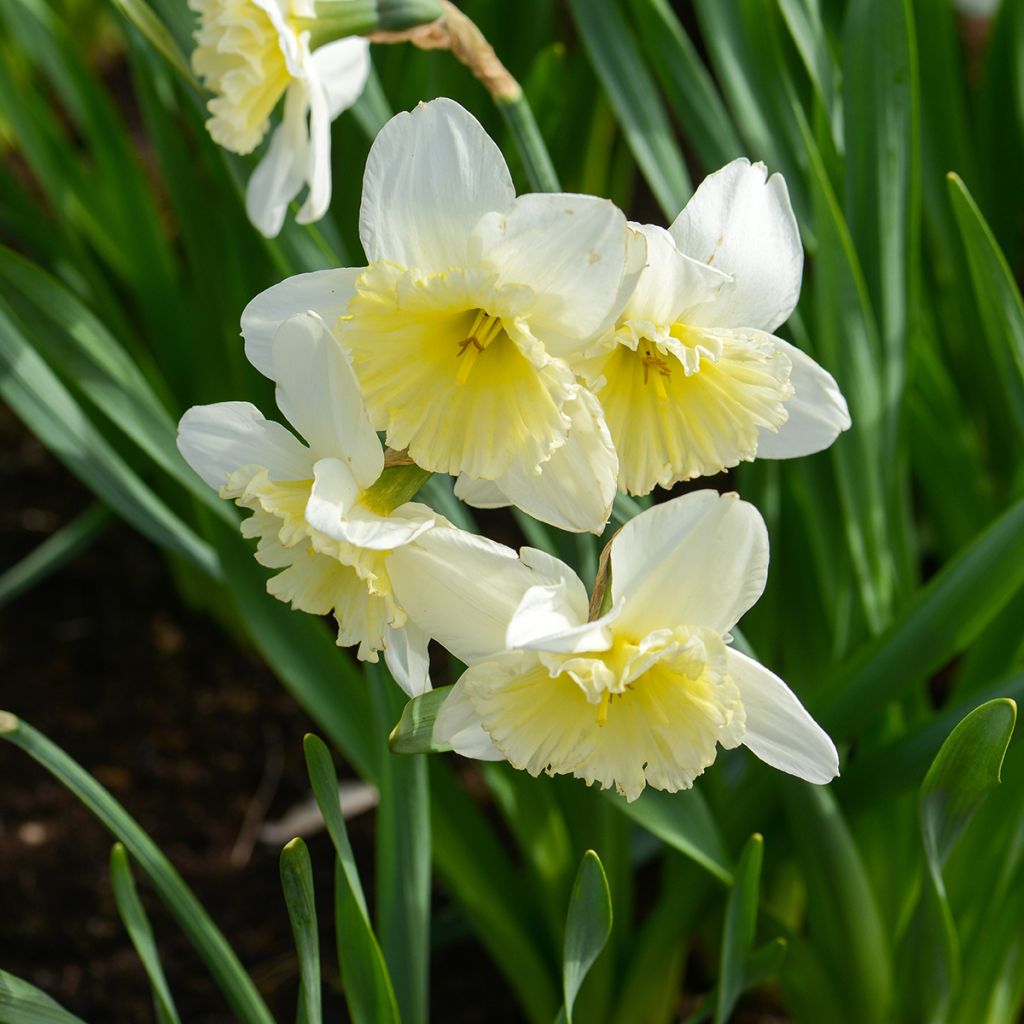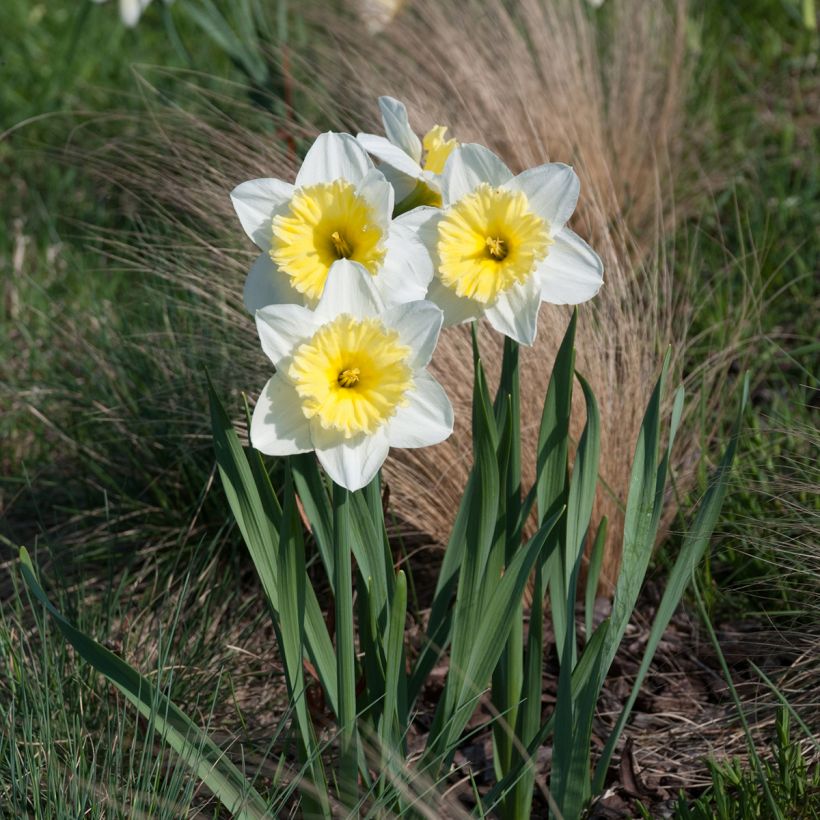

Narcissus Ice Follies - Daffodil


Narcissus Ice Follies - Daffodil


Narcissus Ice Follies - Daffodil


Narcissus Ice Follies - Daffodil


Narcissus Ice Follies - Daffodil


Narcissus Ice Follies - Daffodil


Narcissus Ice Follies - Daffodil


Narcissus Ice Follies - Daffodil


Narcissus Ice Follies - Daffodil


Narcissus Ice Follies - Daffodil


Narcissus Ice Follies - Daffodil


Narcissus Ice Follies - Daffodil


Narcissus Ice Follies - Daffodil
Narcissus Ice Follies - Daffodil
Narcissus 'Ice Follies'
Daffodil, Narcissus
Bulbs in poor condition, some mouldy and rotten.
Christian, 04/11/2020
Special offer!
Receive a €20 voucher for any order over €90 (excluding delivery costs, credit notes, and plastic-free options)!
1- Add your favorite plants to your cart.
2- Once you have reached €90, confirm your order (you can even choose the delivery date!).
3- As soon as your order is shipped, you will receive an email containing your voucher code, valid for 3 months (90 days).
Your voucher is unique and can only be used once, for any order with a minimum value of €20, excluding delivery costs.
Can be combined with other current offers, non-divisible and non-refundable.
This plant carries a 6 months recovery warranty
More information
We guarantee the quality of our plants for a full growing cycle, and will replace at our expense any plant that fails to recover under normal climatic and planting conditions.


Would this plant suit my garden?
Set up your Plantfit profile →
Description
Narcissus 'Ice Follies' is a long-established variety of daffodil, awarded in England for its numerous qualities. It is one of those that return each year, increasing in number, bearing beautiful large white flowers with a large pale yellow crown at the end of sturdy stems. They emerge in April, charming, irresistible, among the brand new foliage, like a bouquet of intense freshness. This variety has proven itself; it is robust and multiplies rapidly in the garden, forming beautiful clumps in sunny beds within a few years. With its short and sturdy stem, it is a superb bouquet flower and an easy plant to succeed with.
The 'Ice Follies' daffodil, introduced in the Netherlands in 1953, belongs to the lily family (Amaryllidaceae). The Narcissus genus includes around 50 species found primarily in the western Mediterranean, but also in Africa and Asia. The 'Ice Follies' daffodil, like the majority of large-cupped daffodils, is the result of cross-breeding between N.poeticus and N(x) pseudonarcissus, or even N.incomparabilis. It is an excellent creation that has already proven itself and is the origin of 8 more recent varieties. The plant produces a sturdy and strong stem that reaches a height of 40 cm (16in) when flowering. It is an early-flowering plant, in March-April, with a large yellow-green flower bud that opens into magnificent flowers, 8 to 10 cm (3 to 4in) wide. The flowers have six wide white petal-like tepals. The stamens are inserted into a cup-shaped corolla or paracorolla, with a light yellow colour marginated with ivory. The foliage is deciduous, disappearing in summer.
There is such a variety of daffodils that you can enjoy them for three months in spring without ever getting tired. They all have the ability to naturalise easily, to endlessly display yellow and white, and often emit sweet fragrances. So many reasons to grow them in large clumps on the short grass meadow or at the edge of beds (at least 20 bulbs) for a multiplied effect. Pair the 'Ice Follies' daffodil, in wild or romantic beds, with squills and hyacinths, accompany them with double tulips as well as forget-me-nots, daisies, chamomiles, or liverworts. A group of 'Ice Follies' daffodils in a vase creates a sensational effect. In pots, this daffodil is perfect.
For bouquets: we advise you not to mix daffodils with other flowers, such as tulips in particular, as the stems contain a substance that causes the other flowers to wilt quickly. This detrimental effect can be mitigated by dipping the ends of the daffodil stems in hot water for 1 to 2 minutes.
Report an error about the product description
Narcissus Ice Follies - Daffodil in pictures






Plant habit
Flowering
Foliage
Botanical data
Narcissus
'Ice Follies'
Amaryllidaceae
Daffodil, Narcissus
Cultivar or hybrid
Planting and care
Daffodils bloom from March to May and come back every year. Very easy to grow, they adapt well to the shade of a wood or a sunny flower bed. Plant them 10 cm (4in) deep and spaced 10 cm (4in) apart. Group them in minimum clusters of 5 bulbs, in uniform colours or mixed. You can plant them in the short grass meadow. In this case, peel off the grass turf, dig and loosen the soil to a depth of at least 20 cm (8in) (the height of a spade). Plant your bulbs, cover with soil and replace the grass turf. Choose a place where you won't mow too meticulously, as it is necessary to let the daffodil leaves wither before cutting them. It is at this moment that the bulb reconstitutes itself and prepares the flowers for the following year. However, remember to cut the flowers as soon as they have wilted to prevent seed formation. This would unnecessarily deplete the bulb.
Planting period
Intended location
Care
-
, onOrder confirmed
Reply from on Promesse de fleurs
Haven't found what you were looking for?
Hardiness is the lowest winter temperature a plant can endure without suffering serious damage or even dying. However, hardiness is affected by location (a sheltered area, such as a patio), protection (winter cover) and soil type (hardiness is improved by well-drained soil).

Photo Sharing Terms & Conditions
In order to encourage gardeners to interact and share their experiences, Promesse de fleurs offers various media enabling content to be uploaded onto its Site - in particular via the ‘Photo sharing’ module.
The User agrees to refrain from:
- Posting any content that is illegal, prejudicial, insulting, racist, inciteful to hatred, revisionist, contrary to public decency, that infringes on privacy or on the privacy rights of third parties, in particular the publicity rights of persons and goods, intellectual property rights, or the right to privacy.
- Submitting content on behalf of a third party;
- Impersonate the identity of a third party and/or publish any personal information about a third party;
In general, the User undertakes to refrain from any unethical behaviour.
All Content (in particular text, comments, files, images, photos, videos, creative works, etc.), which may be subject to property or intellectual property rights, image or other private rights, shall remain the property of the User, subject to the limited rights granted by the terms of the licence granted by Promesse de fleurs as stated below. Users are at liberty to publish or not to publish such Content on the Site, notably via the ‘Photo Sharing’ facility, and accept that this Content shall be made public and freely accessible, notably on the Internet.
Users further acknowledge, undertake to have ,and guarantee that they hold all necessary rights and permissions to publish such material on the Site, in particular with regard to the legislation in force pertaining to any privacy, property, intellectual property, image, or contractual rights, or rights of any other nature. By publishing such Content on the Site, Users acknowledge accepting full liability as publishers of the Content within the meaning of the law, and grant Promesse de fleurs, free of charge, an inclusive, worldwide licence for the said Content for the entire duration of its publication, including all reproduction, representation, up/downloading, displaying, performing, transmission, and storage rights.
Users also grant permission for their name to be linked to the Content and accept that this link may not always be made available.
By engaging in posting material, Users consent to their Content becoming automatically accessible on the Internet, in particular on other sites and/or blogs and/or web pages of the Promesse de fleurs site, including in particular social pages and the Promesse de fleurs catalogue.
Users may secure the removal of entrusted content free of charge by issuing a simple request via our contact form.
The flowering period indicated on our website applies to countries and regions located in USDA zone 8 (France, the United Kingdom, Ireland, the Netherlands, etc.)
It will vary according to where you live:
- In zones 9 to 10 (Italy, Spain, Greece, etc.), flowering will occur about 2 to 4 weeks earlier.
- In zones 6 to 7 (Germany, Poland, Slovenia, and lower mountainous regions), flowering will be delayed by 2 to 3 weeks.
- In zone 5 (Central Europe, Scandinavia), blooming will be delayed by 3 to 5 weeks.
In temperate climates, pruning of spring-flowering shrubs (forsythia, spireas, etc.) should be done just after flowering.
Pruning of summer-flowering shrubs (Indian Lilac, Perovskia, etc.) can be done in winter or spring.
In cold regions as well as with frost-sensitive plants, avoid pruning too early when severe frosts may still occur.
The planting period indicated on our website applies to countries and regions located in USDA zone 8 (France, United Kingdom, Ireland, Netherlands).
It will vary according to where you live:
- In Mediterranean zones (Marseille, Madrid, Milan, etc.), autumn and winter are the best planting periods.
- In continental zones (Strasbourg, Munich, Vienna, etc.), delay planting by 2 to 3 weeks in spring and bring it forward by 2 to 4 weeks in autumn.
- In mountainous regions (the Alps, Pyrenees, Carpathians, etc.), it is best to plant in late spring (May-June) or late summer (August-September).
The harvesting period indicated on our website applies to countries and regions in USDA zone 8 (France, England, Ireland, the Netherlands).
In colder areas (Scandinavia, Poland, Austria...) fruit and vegetable harvests are likely to be delayed by 3-4 weeks.
In warmer areas (Italy, Spain, Greece, etc.), harvesting will probably take place earlier, depending on weather conditions.
The sowing periods indicated on our website apply to countries and regions within USDA Zone 8 (France, UK, Ireland, Netherlands).
In colder areas (Scandinavia, Poland, Austria...), delay any outdoor sowing by 3-4 weeks, or sow under glass.
In warmer climes (Italy, Spain, Greece, etc.), bring outdoor sowing forward by a few weeks.
































